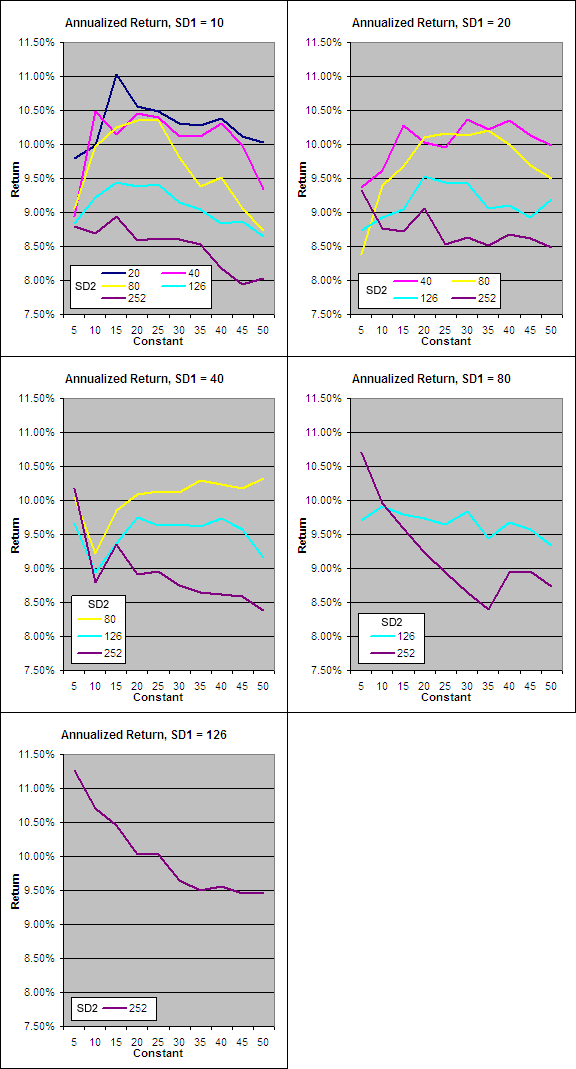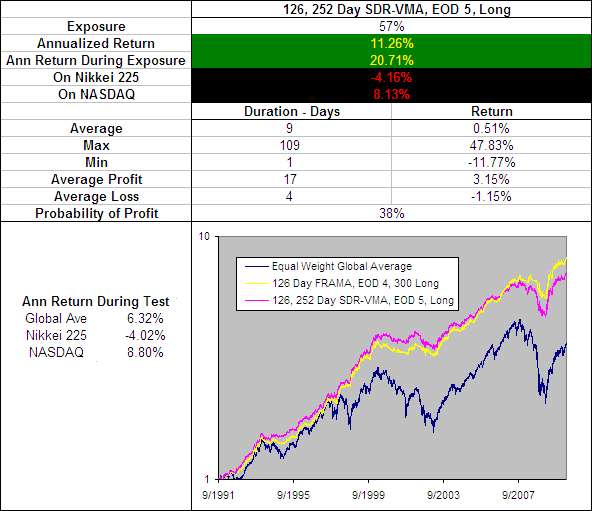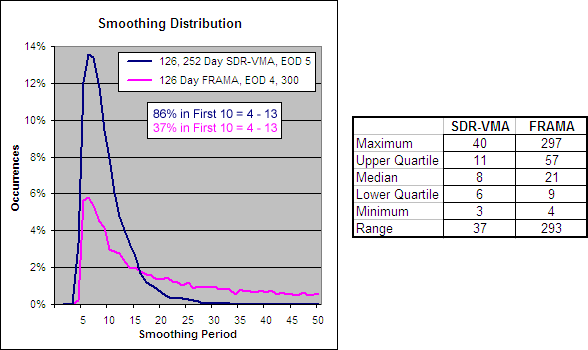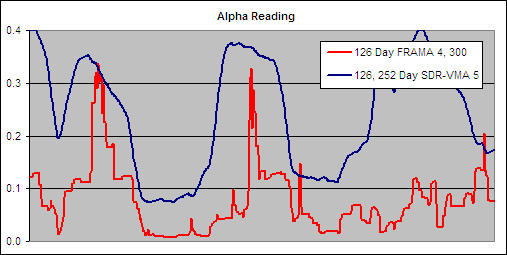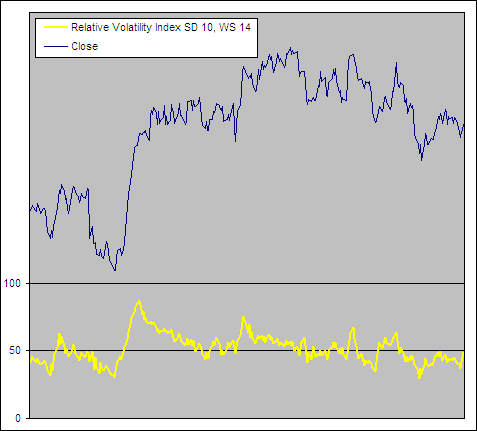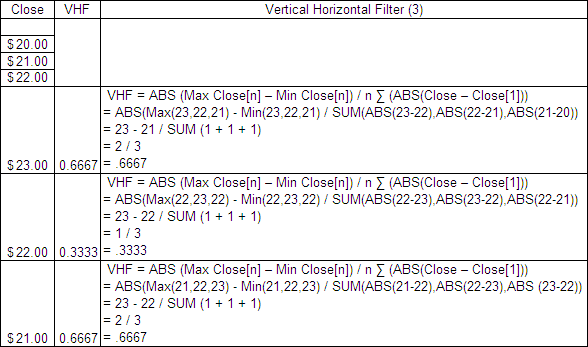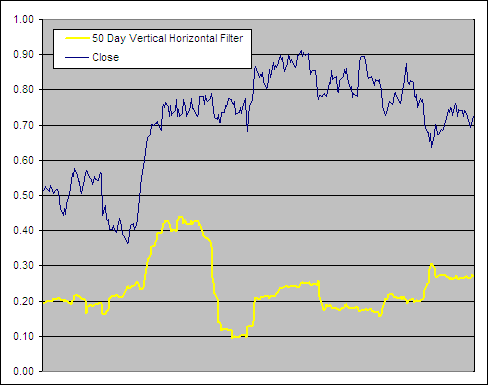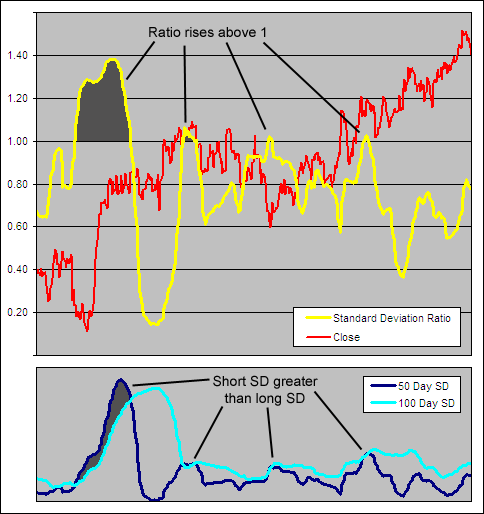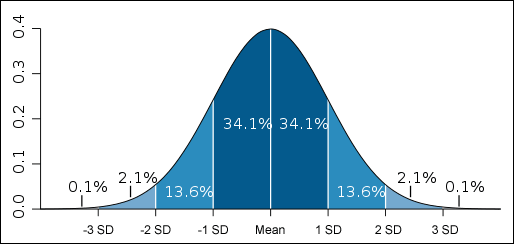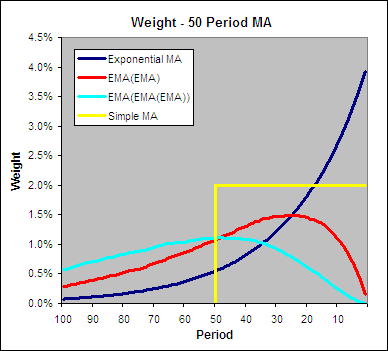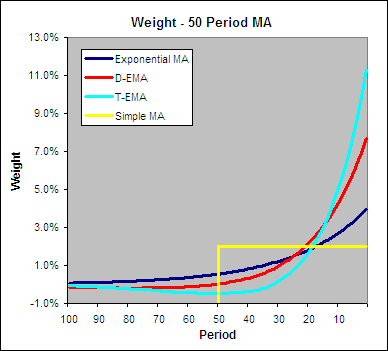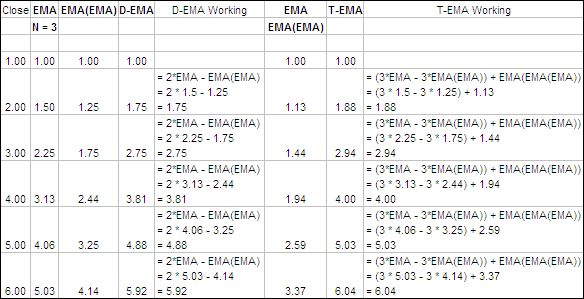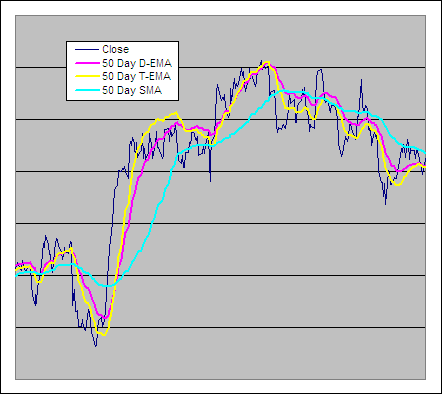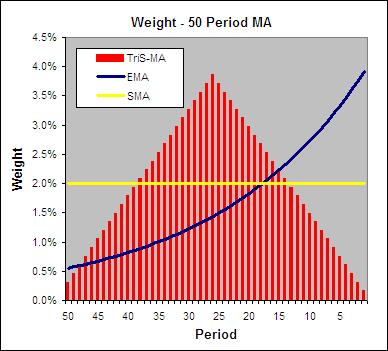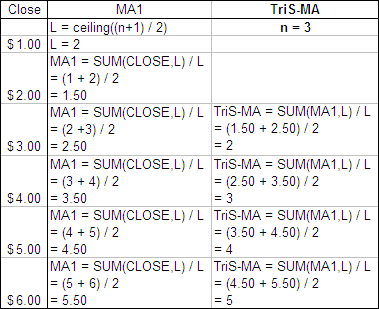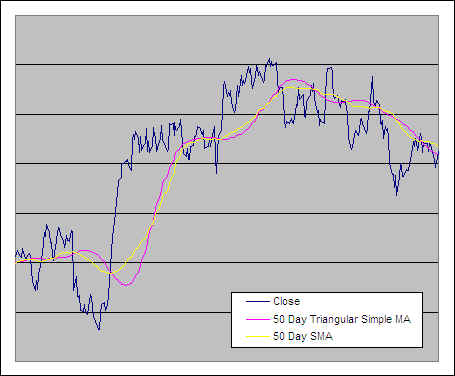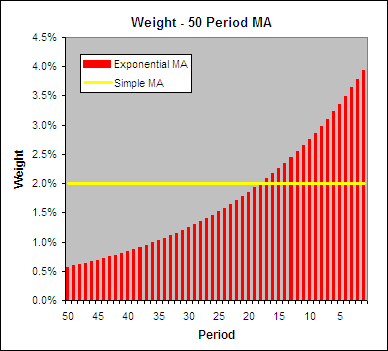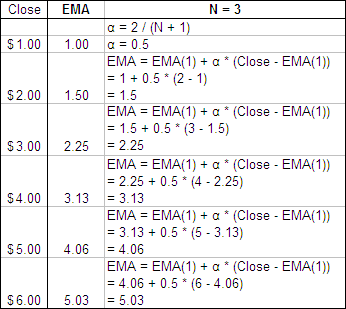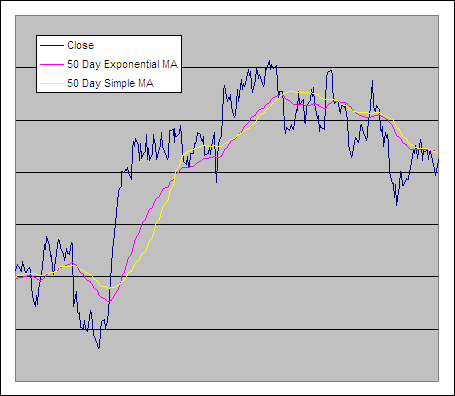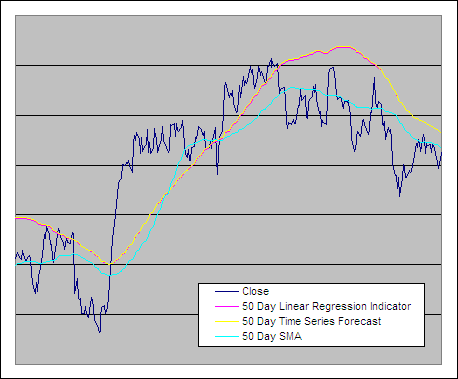The Variable Moving Average (VMA) dynamically adjusts its own smoothing period to the changing market conditions based on a Volatility Index (VI). While any VI can be used, in this article we will look at how the VMA performs using the Relative Volatility Index (RVI).
The RVI-VMA requires three user selected inputs: A Standard Deviation (SD) period, a Wilder’s Smoothing (WS) period and a VMA constant. We tested trades going Long using Daily data taking End Of Day (EOD) signals~ analyzing all combinations of:
SD = 10, 20, 40, 80, 126, 252
WS = 9, 14, 19
VMA = 5, 10, 15, 20, 25, 30, 35, 40, 45, 50
The SD lengths were selected due to the fact that they correspond with the approximate number of trading days in standard calendar periods: 10 days = 2 weeks, 20 days = 1 month, 40 days = 2 months, 80 days = ⅓ year, 126 days = ½ year and there are 252 trading days in an average year.
The WS periods were selected because the standard setting for a RVI is 14 and it makes sense to test a few days either side of this in search of the best option.
The VMA periods were selected after preliminary tests showed that when combined with the different SD lengths they resulted in median smoothing periods between 3 and 173 days; a range that should capture the best results based on what we know from previous research into moving averages.
A total of 180 different averages were tested and each one was run through 300 years of data across 16 different global indexes (details here).
Download A FREE Spreadsheet With Raw Data For
All 180 RVI-VMA Long and Short Test Results
.
RVI Variable Moving Average EOD Returns, Long:
.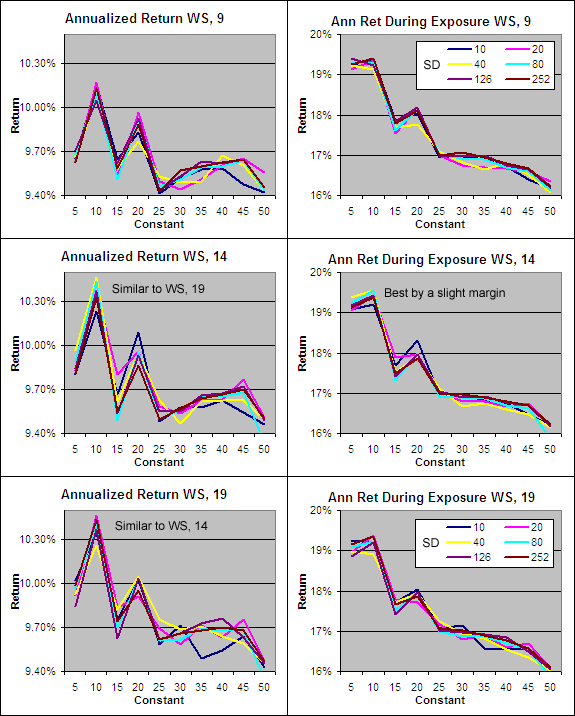
.
As with our previous VMA tests, every single RVI-VMA using EOD signals outperformed the average buy and hold annualized return of 6.32%^ during the test period (before allowing for transaction costs and slippage).
The charts above are split into three sets according to their WS period. Each set reveals very similar results but, low and behold the standard setting of 14 proved the best by a small margin.
To our surprise the Standard Deviation period didn’t really matter and despite testing a huge range from 10 days to 252 days, all the results were very similar. So we decided to select 126 days as the best SD period becuase it has been the best Volatility Index setting in several previous VMA tests.
For the VMA constant, a period of 10 stood out as producing the best results across the board. Therefore we want a RVI-VMA within a SD period of 126, a WS period of 14 and a VMA constant of 10:
.
Best EOD Relative Volatility Index Variable Moving Average:
.
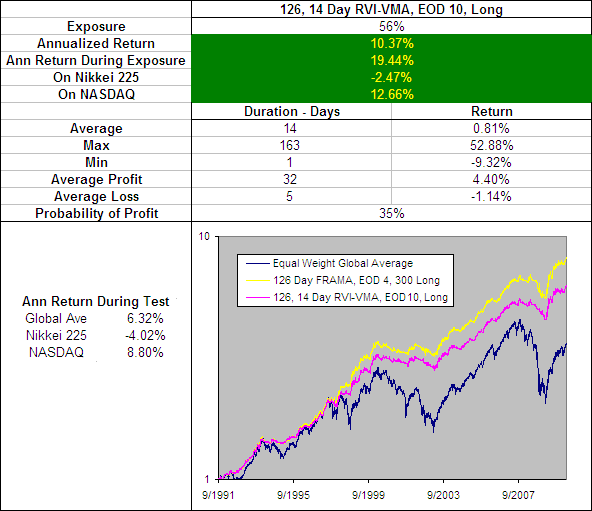 .
.
I have included on the above chart the performance of the 126 Day FRAMA, EOD 4, 300 Long becuase so far this has been the best performing Moving Average. The 126, 14 Day RVI-VMA, EOD 10, Long can’t compare in terms of performance with the FRAMA and offers no outstanding attributes in any other areas.
.
126, 14 Day RVI-VMA, EOD 10 – Smoothing Period Distribution:
.
 .
.
The RVI-VMA is very localized around its median smoothing period of 20. Almost the entire distribution (96%) is covered with a 12 – 31 range which only represents 28% of the smoothing for the better performing FRAMA.
.
126, 14 Day RVI-VMA, 10 – Alpha Comparison
.
To get an idea of the readings that created these results we charted a section of the alpha for the 126, 14 Day RVI-VMA, 10 and compared it to the best performing FRAMA to see if there were any similarities that would reveal what makes a good volatility index:
.
 .
.
As you can see the Alpha for the 126, 14 Day RVI-VMA, 10 is very volatile but stays within a tight range. The better performing 126 Day FRAMA 4, 300 on the other hand produces readings that are much more stable however they do move to extremes upon occasion resulting in a more ‘Variable’ Moving Average.
.
Conclusion
.
The RVI-VMA outperformed a buy and hold approach in our tests but is nowhere neat as effective as the FRAMA and therefore is not worthy of being used as a trading tool.
Want to have a play with this indicator anyway? Get a free Excel spreadsheet at the flowing link under Downloads – Technical Indicators: Variable Moving Average (VMA). It will automatically adjust to one of many different VIs that you can select including the Relative Volatility Index featured in this article.
.
For more in this series see – Technical Indicator Fight for Supremacy
.
- ~ An entry signal to go long for each average tested was generated with a close above that average and an exit signal was generated on each close below that moving average. No interest was earned while in cash and no allowance has been made for transaction costs or slippage. Trades were tested using End Of Day (EOD) signals on Daily data. Eg. Daily data with EOD signals requires the Daily price to close above a Daily Moving Average to open a long and vice versa.
- ^ This was the average annualized return of the 16 markets during the testing period. The data used for these tests is included in the results spreadsheet and more details about our methodology can be found here.
